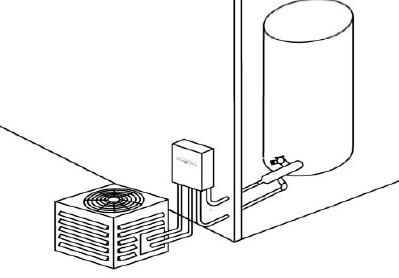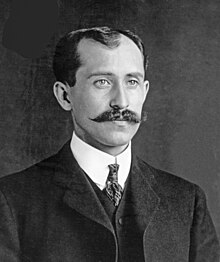
 |
|
|
#771 | |
|
Supreme EcoRenovator
Join Date: Mar 2009
Location: Portland, OR
Posts: 4,004
Thanks: 303
Thanked 723 Times in 534 Posts
|
Quote:
So are you considering making your own air to water heat pump? Or perhaps a heat pump Heat Recovery Ventilator? Or perhaps both integrated together like a combi? Have you done any similar projects? -AC_Hacker
__________________
I'm not an HVAC technician. In fact, I'm barely even a hacker... Last edited by AC_Hacker; 06-12-11 at 11:24 PM.. |
|
|
|

|
|
|
#772 |
|
Helper EcoRenovator
Join Date: Aug 2010
Posts: 44
Thanks: 10
Thanked 4 Times in 2 Posts
|
Yes, yes, and yes
Similar, Not really I am an industrial designer who builds a lot of prototypes, I am a Solidworks (software) user and have a good associate which has 30 + years in industrial refrigeration. He has been watching also and we are compiling components now for testing. Kbonk Bottle Rocket Scientist Last edited by kbonk; 06-12-11 at 11:38 AM.. |
|
|

|
|
|
#773 |
|
Supreme EcoRenovator
Join Date: Mar 2009
Location: Portland, OR
Posts: 4,004
Thanks: 303
Thanked 723 Times in 534 Posts
|
Gary, of Build It Solar sent me a useful link to a site that manufactures a number of interesting and curious products that exploit vapor-compression machines in various ways.
 Delving into just one of them reveals a split Air Conditioner that re-directs it wasted heat to a DHW tank. They even have fairly detailed installation instructions of this thing, which among other things, illustrate this ingenious tank tap: Lots of food for thought throughout the web-site. Check it out... -AC_Hacker
__________________
I'm not an HVAC technician. In fact, I'm barely even a hacker... Last edited by AC_Hacker; 06-13-11 at 12:21 AM.. |
|
|

|
|
|
#774 |
|
Supreme EcoRenovator
Join Date: Mar 2009
Location: Portland, OR
Posts: 4,004
Thanks: 303
Thanked 723 Times in 534 Posts
|
So what is your first project going to be?
I just bet you have some dandy Solidworks sketches you could share... -AC_Hacker
__________________
I'm not an HVAC technician. In fact, I'm barely even a hacker... |
|
|

|
|
|
#775 |
|
Helper EcoRenovator
Join Date: Aug 2010
Posts: 44
Thanks: 10
Thanked 4 Times in 2 Posts
|
Solidworks stuff is income related to date, and some is shareable at some time.
I would like to incorporate a Passive HRV first, then tie in the technology you show above to augment hot water. Considering the requirements of thermal transfer I think there are a number of innovative uses for a core passive HRV module. all this depends on the "found components " More to come lets keep hacking  |
|
|

|
|
|
#776 | |
|
Supreme EcoRenovator
Join Date: Mar 2009
Location: Portland, OR
Posts: 4,004
Thanks: 303
Thanked 723 Times in 534 Posts
|
Quote:
We are here to share this information with the rest of the interested, intelligent and active community of people. We do this so that we might all benefit. It would be a good and useful and even neighborly thing to share more specific information about the "number of innovative uses" you are contemplating. -AC_Hacker
__________________
I'm not an HVAC technician. In fact, I'm barely even a hacker... |
|
|
|

|
|
|
#777 |
|
Helper EcoRenovator
Join Date: Aug 2010
Posts: 44
Thanks: 10
Thanked 4 Times in 2 Posts
|
I want o add to this form and agree in DiY concept.
and Will Share; Consider, placing your Geo ground tubes in basement floor, or foundation walls under three feet why drill wells? Air to water systems IE; Ecocute systems, R744.com For thermal mass flooring consider Versa Rock dry laying cement sheet , Phase changing material: Micronal by BASF thin walled insulation, aerogel by Cabot The Wright Brothers had each other, we are all brothers in kind Hope I havent offended anyone with My limited time and comunications |
|
|

|
|
|
#778 | ||
|
Supreme EcoRenovator
Join Date: Mar 2009
Location: Portland, OR
Posts: 4,004
Thanks: 303
Thanked 723 Times in 534 Posts
|
Quote:
Regarding 'why drill holes', I have come to appreciate how very slowly heat moves through the earth. I have also come to understand that when you drill a 200 foot deep borehole, and install a loop, you are extracting heat from a huge cylinder that is 200 feet high and about 16 feet in diameter (actually larger, but there is the law of diminishing returns). That is a huge mass of earth... through which the heat moves very slowly... but if you have 200 feet (depending on your soil characteristics) you will be able to extract aprox. 12,000 BTU/hr... not forever, but if everything is balanced properly, perhaps enough to get you through the winter. If your house is big, and/or poorly insulated, you'll need multiple holes to draw from. So, if I understand you correctly, you are talking about extracting heat from your foundation at depths under 3 feet... correct? I think you could extract some heat, but probably not very much. Compared to a cylinder 200 feet deep by 16 feet in diameter, a typical foundation is not so massive. If you extract too much heat, you will lower your frost-line and freeze your foundation, perhaps even making it heave, crack and fail. Not so good. OK, this is an existing product... What is your thinking here? Quote:
Yes, this is a product... and your thinking here is???  The Wright brothers also did a huge amount of building and testing and changing their ideas many times and building more models and more testing until, finally they were finally, after years, able to fly. If they never built and tested and re-worked and tested... they never would have gotten off the ground. Not at all... Building stuff and actually finding out what works is such a tremendous kick! Having some hands-on experience is also helpful for those times when the brain storms really start to howl, because only with some experience to draw upon, will you know for sure which way the wind is actually blowing. Respectfully, -AC_Hacker
__________________
I'm not an HVAC technician. In fact, I'm barely even a hacker... |
||
|
|

|
|
|
#779 |
|
You Ain't Me
Join Date: Nov 2009
Location: Northampton MA
Posts: 662
Thanks: 6
Thanked 71 Times in 58 Posts
|
Yeah, freezing foundation. I have talked to a couple people where I live that have frozen their foundations with direct exchange systems. They were trying to have too many wells too close to the house due to a limited yard.
|
|
|

|
|
|
#780 | |
|
Supreme EcoRenovator
Join Date: Mar 2009
Location: Portland, OR
Posts: 4,004
Thanks: 303
Thanked 723 Times in 534 Posts
|
Quote:
One precaution was to keep boreholes at least 20 feet from the foundation. The other precaution was to use thick, high-quality insulation on the refrigerant lines going between the heat pump situated in the basement and the loop field. This particular Canadian company did vertical boreholes, but I have noticed that many DX installers are now using a conical pattern for their loop field, with the large part of the cone at the bottom, so figuring distances from the foundation would have to take this subterranean geometry into account. When I built my little loop field (it seemed really huge when I built it, now it seems so tiny) I knew that there was the possibility of freezing the ground, and that was one reason I started at the back edge of my lot. This winter, when I was testing, I closely monitored my loop-water temp, in order to avoid freezing and damaging my heat exchangers... another great reason to run water in the loop. I don't know if you would be able to tell if you were freezing the ground if you did a DX installation. There's a lot of heat energy that can be withdrawn from the ground by freezing it, what with the latent heat of fusion and all. I thought it would be better to avoid freezing, because then I could run straight water, which has a higher heat-carrying capacity than a water/anti-freeze mix... less viscosity too. -AC_Hacker
__________________
I'm not an HVAC technician. In fact, I'm barely even a hacker... |
|
|
|

|
 |
| Tags |
| air conditioner, diy, gshp, heat pump, homemade |
|
|